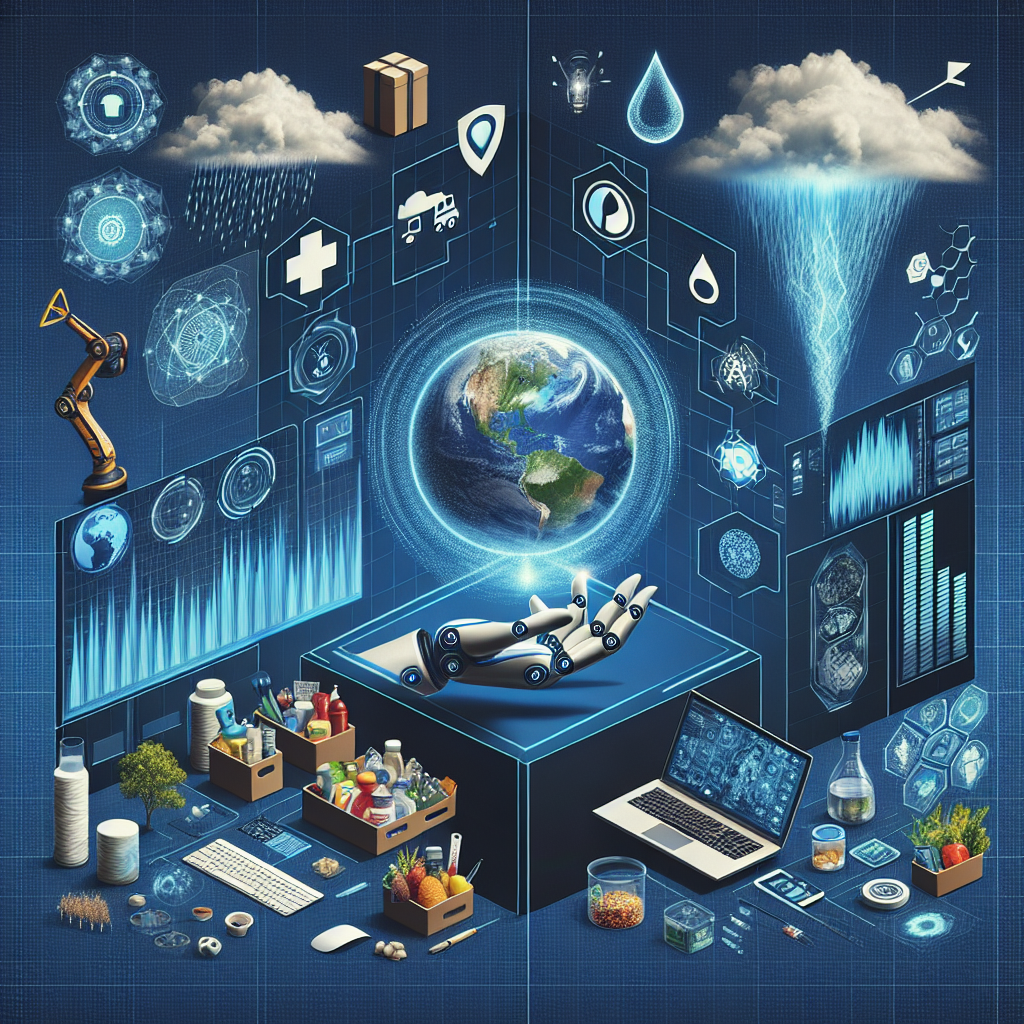In recent years, the world has seen an increase in the frequency and severity of natural disasters such as hurricanes, wildfires, earthquakes, and floods. These disasters have caused immense damage to infrastructure, loss of life, and displacement of communities. In the face of such catastrophic events, it has become increasingly important for governments, organizations, and communities to enhance their disaster preparedness and response strategies. One technology that is playing a crucial role in this regard is artificial intelligence (AI) software.
AI software is revolutionizing disaster preparedness and response efforts by providing advanced analytics, predictive modeling, and real-time monitoring capabilities. By leveraging AI technologies, organizations can analyze vast amounts of data, identify patterns and trends, and make informed decisions to mitigate the impact of disasters and save lives. In this article, we will explore how AI software is enhancing disaster preparedness and response efforts around the world.
1. Early Warning Systems
One of the key ways in which AI software is enhancing disaster preparedness is through the development of early warning systems. These systems use AI algorithms to analyze data from various sources such as satellites, weather stations, and sensors to detect potential disasters before they occur. For example, AI software can analyze weather patterns to predict the likelihood of a hurricane or earthquake, allowing authorities to issue timely warnings and evacuate at-risk areas.
Early warning systems powered by AI have proven to be highly effective in saving lives and reducing the impact of disasters. For instance, in 2018, the Indian state of Odisha successfully evacuated over a million people ahead of Cyclone Fani, thanks to the early warning system developed by the government in collaboration with AI experts. As a result, the death toll from the cyclone was significantly lower compared to previous disasters.
2. Real-time Monitoring and Response
AI software is also being used to monitor disasters in real-time and coordinate response efforts. For example, drones equipped with AI algorithms can be deployed to survey disaster-affected areas, assess damage, and identify survivors in need of rescue. AI-powered chatbots can also be used to provide real-time updates and information to affected populations, helping them stay informed and connected during emergencies.
Moreover, AI software can analyze social media data to identify individuals in distress and prioritize response efforts accordingly. By leveraging AI technologies, organizations can streamline their disaster response operations, allocate resources more effectively, and ensure a coordinated and timely response to emergencies.
3. Predictive Modeling
Another key application of AI software in disaster preparedness is predictive modeling. AI algorithms can analyze historical data, environmental factors, and socio-economic indicators to predict the impact of disasters and inform decision-making processes. For instance, AI software can predict the spread of wildfires based on weather conditions, topography, and vegetation cover, enabling authorities to deploy resources in advance to contain the blaze.
Predictive modeling powered by AI can also help organizations assess the vulnerability of communities to disasters and develop targeted mitigation strategies. By identifying high-risk areas and populations, governments and NGOs can prioritize investments in infrastructure, early warning systems, and disaster response capabilities to build resilience and reduce the impact of future disasters.
4. Resource Allocation and Optimization
AI software is also enhancing disaster preparedness by optimizing the allocation of resources and logistics planning. AI algorithms can analyze supply chain data, transportation routes, and resource availability to identify bottlenecks and inefficiencies in disaster response operations. By automating decision-making processes, organizations can ensure that resources are deployed where they are needed most and minimize waste and delays.
Furthermore, AI-powered predictive analytics can help organizations forecast the demand for critical resources such as food, water, and medical supplies in the aftermath of a disaster. By proactively stocking up on essential supplies and pre-positioning assets in strategic locations, organizations can ensure a swift and efficient response to emergencies, saving valuable time and lives.
FAQs
Q: How is AI software being used in earthquake preparedness?
A: AI software is being used in earthquake preparedness to analyze seismic data, predict the likelihood of earthquakes, and assess the vulnerability of buildings and infrastructure. By leveraging AI technologies, organizations can develop early warning systems, conduct risk assessments, and implement retrofitting measures to mitigate the impact of earthquakes.
Q: Can AI software predict the impact of climate change on natural disasters?
A: Yes, AI software can predict the impact of climate change on natural disasters by analyzing historical data, climate models, and environmental factors. By identifying trends and patterns, AI algorithms can forecast the frequency and intensity of disasters such as hurricanes, droughts, and floods, helping organizations prepare for future challenges.
Q: How can communities benefit from AI-powered disaster preparedness?
A: Communities can benefit from AI-powered disaster preparedness by receiving timely warnings, access to real-time information, and targeted assistance during emergencies. By leveraging AI technologies, communities can stay informed, connected, and resilient in the face of disasters, reducing the impact on lives and livelihoods.
In conclusion, AI software is revolutionizing disaster preparedness and response efforts by providing advanced analytics, predictive modeling, and real-time monitoring capabilities. By leveraging AI technologies, organizations can enhance their early warning systems, optimize resource allocation, and improve coordination and communication during emergencies. As the frequency and severity of natural disasters continue to rise, AI-powered solutions will play an increasingly vital role in building resilience and saving lives in the face of catastrophe.

